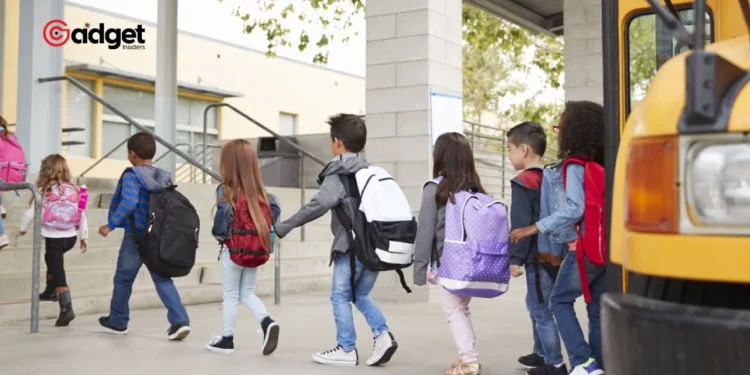The U.S. education system is on the brink of a significant upheaval as schools nationwide brace for widespread teacher layoffs. A pivotal factor is the impending expiration of federal pandemic aid—a funding lifeline that injected unprecedented resources into K-12 education. This sharp “funding cliff,” coupled with declining enrollments and inflationary pressures, has pushed many districts into survival mode.
As headlines of cuts emerge across the country, educators and administrators are grappling with difficult decisions that will shape the future of millions of students.

Missoula, Montana: Deep Cuts to a Generation-Old System
Missoula County Public Schools (MCPS) face their most severe reductions in a generation. Superintendent Micah Hill disclosed that the district plans to cut 33 teaching positions and 13 administrative roles, including the special education and fine arts directors.
Hill highlighted a convergence of challenges, saying, “The last time that MCPS saw these reductions was almost a generation ago.” In addition to ending federal aid, the district has lost nearly 500 students since 2019 while confronting rising insurance and utility costs.

Arlington, Texas: Losses in Essential Student Support Services
Arlington Public Schools announced 275 job cuts funded by federal aid, affecting staff who provided crucial after-school care, tutoring, and mental health services. Though the district employs about 8,500 staff, these reductions will profoundly impact students and families relying on these services.
Affected employees are encouraged to apply for other available positions, but the shadow of uncertainty looms.
Hartford, Connecticut: An Enrollment Exodus
Hartford Public Schools informed 30 teachers and 79 other staff members that their jobs would be lost. Superintendent Leslie Torres-Rodriguez attributed the issue to a long-term enrollment decline exacerbated by the funding cliff, stating, “That is a long-term problem that has been exacerbated by the ESSER cliff.”
About 384 positions will be cut, though some were vacant or will not be refilled after retirement.
Schools are bracing for widespread teacher layoffs. Here’s whyhttps://t.co/qKZue9aJhn
— MSN (@MSN) May 12, 2024
Schools: The Roots of the Funding Cliff
Congress authorized three rounds of federal relief for K-12 education after the COVID-19 pandemic struck. This aid totaled $190 billion, dwarfing typical federal funding sixfold. Schools quickly adapted, investing in masks, cleaning supplies, and HVAC system upgrades.
However, the final and largest round required that districts use at least 20% of the funds to address learning loss through tutoring programs, summer school, or extended school days.
A report from CALDER, an education research center, found that around 12,000 positions, including over 5,000 teaching roles, were created in Washington state alone with these funds. However, with these resources expiring, districts must now decide which positions can be sustained.
An Uncertain Future: Impact on Students and Teachers
The impact of these layoffs will reverberate through communities, with low-income districts and students of color likely to be hit hardest. Heather Peske, president of the National Council on Teacher Quality, warns, “Students of color and students who are attending higher-poverty districts are going to be the ones to feel the brunt of the layoffs.”
Moreover, Peske emphasizes that layoffs based solely on seniority risk removing highly effective teachers, further disadvantaging students. “We know that if they’re using seniority as the only criteria, they could be laying off teachers who are highly effective—and this will leave students at a major disadvantage,” she said.

Moving Forward: A Challenging Road Ahead
Districts across the country face stark choices as they navigate the complexities of budgeting in a post-pandemic world. While some may be forced to reduce staff to pre-pandemic levels, others must explore innovative solutions to ensure students continue to receive quality education.
The next few months will be critical in determining the extent of the disruption and whether schools can weather the storm.










